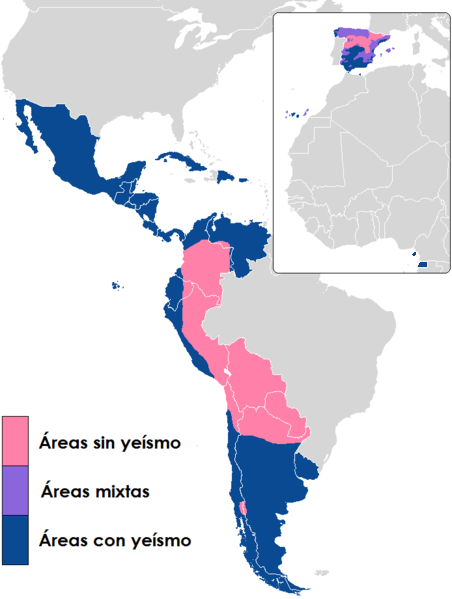Spanish Alphabet: The Essential Guide for Beginners
American children are great at remembering stuff. Ask a group of 7-year-olds how many letters there are in the English ABC, and you’ll see a few hands shoot up in the air. “26!”, they will shout in unison. In fact, they may answer your question with a song.
With Spanish-speaking students, however, you might get a few different answers. Don’t get me wrong, it’s not that Spanish, Mexican or Uruguayan children don’t have a good memory. It’s just that people in the Spanish-speaking world, no matter how old they are, can’t seem to agree on how many letters the Spanish alphabet really has.
Table of Contents
→Sign Up Now: Free Trial Spanish Lesson With a Native Speaker Teacher!←
In old dictionaries, “ch” is given a “letter status” and the words beginning with this sound are listed in a separate section. Similarly, words beginning with “ll” (double L) appear right after the single-L words. In 2010, the Real Acamedia Española, the official regulatory body of the Spanish language, sorted out the argument by saying that “ch” and “ll” should no longer be taught as distinct characters
This would leave the Spanish alphabet with exactly 27 letters:
a, b, c, d, e, f, g, h, i, j, k, l, m, n, ñ, o, p, q, r, s, t, u, v, w, x, y, z
But what do these letters sound like? Before you continue reading, check out our video about the Spanish alphabet and find flashcards with examples for every sound.
Something you should know about the Spanish alphabet is that the issue of how many characters it really has is a rather controversial subject. For example, language authorities can’t agree on whether “rr” is a separate letter or not. Some even say that “k” and “w” shouldn’t be counted as part of the Spanish alphabet because they only appear in loanwords, i.e., words borrowed from foreign languages.
However, you don’t have to worry about any of that because we have decided to cover all the bases and include all the letters. We’ll be working, then, with a 30-letter alphabet.
Below, you’ll find a (very!) full list of letters, their Spanish names, and tips on how to pronounce them.
A – “A”
The first sound in the Spanish alphabet is like the “a” in father, but instead of lowering your jaw, it should stay in its normal position, which gives the sound a clearer quality.
Example: papa (potatoe), carpa (tent)
B – “Be”
Similar to the sound in “Bob”, B is often called “be larga” (long b) to differentiate it from V or “ve corta” (short v), but in fact, they have the same length.
Spanish B is a softer version of its English counterpart, which means that the upper and lower lips should barely touch each other, avoiding the typical “pop” that the B sound has in words like “baby”.
Example: ballena (whale), bata (robe)
C – “Ce”
The Spanish alphabet has a big advantage over the English one—almost every letter has only one corresponding sound.
Having said that, C is one of the few letters in the Spanish alphabet that has two possible sounds.
- Before vowels I or E, it has a /s/ sound.
Examples:
cielo /sielo/ (sky), cemento /semento/ (concrete)
- Before consonants or vowels other than I or E, however, C sounds just like a K.
Examples:
creación /kreasion/ (creation), cama /kama/ (bed)
CH – “Che”
“Ch” may be divisive when it comes to its status as a distinct letter in the Spanish alphabet, but learning it should be a piece of cake for English speakers. Its sound is just like that of English Ch in words like “church” or “chair”, and it is never a /k/ sound as in “chemist” or “architecture”.
Example:
chiste (joke), chato (flat)
D – “De”
To produce Spanish D, you have to put your mouth between your upper and lower teeth and make a soft, rapid sound, just like you would to make an English /th/ in words like “those” and “them”.
Example: dado (dice), dedo (finger)
E – “E”
Not as open as its English counterpart, Spanish E is more like the first part of the diphthong “ay” in words like “pay” or “may,” though it can have a more open quality when it appears at the beginning of words.
Example: elefante (elephant), pesebre (manger)
F – “Efe”
Like many letters in the Spanish alphabet, F has a one-to-one equivalent in the English ABC.
It’s the same sound you know from words like “find” or “feel”
Example: fantástico (fantastic), frenético (frantic)
G – “Ge”
Remember we said there were a few letters in the Spanish alphabet that could be pronounced in at least two different ways? Well, G is one of them.
- Before A, O, U or a consonant sound, it’s like asofter version of English G in words like “go” or “get”.
Example: garganta (throat), galgo ( greyhound)
- Before I or E, however, it’s like a stronger, more hissing version of English H.
Example: gente (people), gitano (gypsy)
When Spanish G is followed by I or E with a /g/ instead of a /h/ sound, Spanish-speaking people write an unpronounced U between G and the following vowel.
Example: guitarra /gitarra/ (guitar), guerra /gerra/ (war)
But wait! There are times when a U between a G and an E or an I is actually pronounced! In that case, Spanish speakers mark that U with an umlaut: ü. When this happens, G remains /g/, not /h/.
Example: pingüino /pinguino/ (penguin), vergüenza /berguentha/ (shame)
H – “Hache”
What do words like “honest”, “honor” and “heir” have in common?
That’s right. They all have a silent H. Spanish H is always like that, it’s always unpronounced. As you can imagine, that makes it quite hard for children to learn when to use it in spelling!
Examples: hamaca /amaka/ (hammock), heladera /eladera/ (fridge).
I – “I”
Spanish I is like the “ee” in “feet”, but a bit shorter. Your mouth should be more “relaxed” when pronouncing Spanish I than with the English “ee”.
Example: divino (divine), girasol (sunflower)
J – “Jota”
To make the sound that corresponds to Spanish J, you have to produce an English H (not the silent one, the other!) but try to make it harder, as if you were angry. This sound is very similar to that of “ch” in the word “loch,” or in the German word “Ich,” for example.
Example: jardín /hardin/ (garden), jamón /hamon/ (ham)
Note: the sound for J is the same that G has before I or E, which we discussed earlier.
K – “Ka”
A rare letter and sound in the Spanish alphabet, K is exactly like its English counterpart, albeit with a slighter puff of air than in English.
Example: kilo (kilo), kilómetro (kilometer)
L – “Ele”
Spanish L is like the clear L sound in “elephant” rather than the darker sound in “dull”.
Example: lata (tin), loro (parrot)
LL – “Elle”
Speakers from Spain pronounce this sound the same way English speakers pronounce the “y” in “yes”.
Example: tortilla /torti-ya/ (tortilla)
Speakers from some regions of Argentina and Uruguay, on the other hand, pronounce Ll as a /sh/.
Example: lluvia /shuvia/ (rain)
You may also hear that older people, especially from the countryside, pronounce LL very similarly to “li”: llama /liama/ (flame)
M – “Eme”
M sounds just like its English counterpart.
Example: mamá (mom)
N – “Ene”
Spanish N is also the same as English N.
Example: nene (kid)
Ñ – “Eñe”
This elusive letter, one of the hallmarks of the Spanish alphabet, sounds like the “ny” bit in “Anya” or “canyon”.
Example: ni (child), (gnocchi)
O – “O”
Spanish O is like the vowel sound in “phone”, but without the /u/ sound we make just before reaching /n/
Example: orilla (shore), olla (pan)
P – “Pe”
Spanish P is very similar to its English counterpart, but it is said with less of a popping sound.
Example: pena (pity), perdón (forgiveness)
Q – “Qu”
Q sounds just like “K” (or like C before most sounds). It’s always followed by an unpronounced U.
Example: querido /kerido/ (dear), quién /kien/ (who)
R – “Ere”
Spanish R (not to be confused with RR) sounds almost like a D. It’s the same sound as the T in the word “city”, as pronounced in the States.
Example: aroma (scent), era (era)
Rr – “Erre”
This sound is represented by a double R because is highly trilled, meaning that the tongue touches the alveolar ridge several times during its production. R is the most difficult sound in the Spanish alphabet for English speakers.
Example: erróneo (wrong), arruga (wrinkle)
Listen to how Sofía Vergara pronounces words like “Barranquilla” and “gonorrhea” and try to imitate her accent! Can you think of a more entertaining way of improving your Spanish R?
S – “Ese”
No surprises here. Spanish S is just like English S.
Example: silla (chair), sala (room)
T – “Te”
Like P and K, Spanish T is very similar to its English counterpart, though it is pronounced with less strength.
Example: tomate (tomatoe), tiza (chalk)
U – “U”
Spanish U has a similar sound to the “oo” in “boot”.
Example: uva (grape), humo (smoke)
V – “Uve”
There’s no phonetic difference between B and V in Spanish. However, they can’t be interchanged in spelling. Though the preferred way to call this letter is “uve” according the Real Academia Española, you will see that it is very commonly called “v corta” or “v pequeña,” especially in Latin America.
Example: vaca /baca/ (cow), vaso /baso/ (glass)
W – “Doble V,” or “Uve doble”
This sound is just like the English W. In fact, it only appears in foreign words.
Example: wafle (waffle), Watts (Watts)
X – “Equis”
Like in English, Spanish X sounds like the combination of K and S.
Example: experimento (experiment), excelencia (excellence)
Y – “Ye” or “I griega”
Like Ll, Y is pronounced like the “y” in yes by Spanish people and like a “sh” by Argentinean or Uruguayan speakers. In isolation, it is pronounced like the “ee” in “tree.”
Example: ya (now), yo (I), y /ee/ (and)
Z – “Zeta”
Zeta might be the most confusing letter in the Spanish alphabet. It has two possible sounds, but none of them is the one we associate with English Z.
Speakers from some parts of Spain (like Madrid) pronounce this letter like the “th” in “thought.”
Example: zorro /thorro/ (fox)
Speakers from Latin American and some other regions of Spain (such as the Canary Islands), on the other hand, pronounce it like an S.
Example: zapato /sapato/ (shoe)
So, there you are. What you see above is the most complete version of the Spanish alphabet you could ever find!
→Sign Up Now: Free Trial Spanish Lesson With a Native Speaker Teacher!←
Want to go beyond the Spanish alphabet and start learning interesting phrases and expressions? Contact us now and we’ll pair you up with a Spanish native teacher so you can start learning right now!




